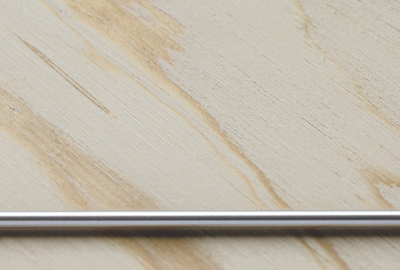Commercial
The What and Why Behind the Spark’s NSF Certification
The NSF logo is a familiar Icon of our environment. It surrounds us in our day-to-day life, and possibly you’ve seen it on a set of modular shelves that you bought at Home Depot, on the packaging of your favorite protein shake, or on the door of your new under counter dual zone beverage cooler. If you spend any time in a commercial kitchen, you’ve no doubt noticed the circular, sometimes blue logo on almost everything, knives, tables, ovens, spot it once, and then you quickly realize you are surrounded by NFS-badged products. But what exactly does it mean to have NSF on a product, and what does that logo communicate to consumers?

Many wire racks like these are NSF certified as they are commonly used in restaurant walk-in coolers and storerooms.
NSF is…
NSF is a consumer safety watchdog organization that protects consumers with its rigorous safety testing of products and food. Any food item in your pantry with an NSF badge has had a full audit of its ingredients for accuracy, safety, and to be contaminant free. Manufacturers pay NSF to test the viability of their products.

Consumers can buy with confidence when products have been through third-party consumer safety testing by NSF.
The Foundation’s History
Started in 1944 as the National Sanitation Foundation NSF’s original goal was to standardize sanitation and food safety practices at a time when these guidelines were non-existent. Over the past 79 years, NSF has broadened its scope to include public health and safety on a global scale. They have been a part of the development of over 75 different standards and protocols for food prep equipment, not to mention helping manufacturers develop thousands of food-safe products for commercial kitchens, via their certification process. Check out this post from last September for more tidbits on the history of food safety and FireBoard’s contemporary role in food safety mechanisms like HACCP plans.

Above, the back of FireBoard’s Spark shows the NSF certification badge. Below Spark packaging shows same.
How did the Spark get NSF Certified?
In the interest of bringing the most helpful instant-read thermometer to market, FireBoard knew that having third-party testing was important. FireBoard CEO Ted Conrad: “The main benefit from achieving NSF certification is that restaurant owners can have the peace of mind with buying NSF products for use in their facility.”
The Spark is certified under NSF’s Commercial Food Equipment product category NSF/ANSI 2. The full listing criteria is a copyright-protected document that you can download from NSF here. In broad strokes, this standard pays attention to the product’s ability to survive in a splash zone, be easily cleaned, and function accurately as a thermometer. Being a NIST Chain calibrated thermometer, the accuracy was not of a concern for us. For more information on FireBoard Lab’s calibration process click here.

 FireBoard’s Director of Product Design and Development, Paul Skelton, took this information and prepared a PDF overview of the Spark for NSF to review in advance of prototypes that were later submitted for review.
FireBoard’s Director of Product Design and Development, Paul Skelton, took this information and prepared a PDF overview of the Spark for NSF to review in advance of prototypes that were later submitted for review.
This point in the process is what really gets interesting, as NSF now will look at the construction materials listed and will cross-check them against the FDA’s standards, and may recommend changes. Paul explains that these standards affected the visual appearance of the Spark, especially the texture.

FireBoard’s signature line pattern on the back of FireBoard 2 Pro case.
There were going to be debossed diagonal lines on the side of the Spark, similar to those on the FireBoard 2. According to NSF standards, these tiny grooves could harbor bacteria growth and would not pass final inspection. Thus, the black plastic body of the Spark is smooth and easy to sanitize. “Even the gap between the Spark’s bezel and the plexiglass was a concern and had to be tightened up” Skelton explains.

Official letter of certification from NSF.
As Paul refined the Spark, NSF also audited the FireBoard Labs manufacturing facility. Ted estimates the entire process took about 4 months, and now the Spark is now listed among the most robust commercial-grade restaurant equipment. And restaurant owners trust NSF, “What this translates to in their kitchen is primarily two things,” Conrad continues” assurance of accuracy and the device is easily cleanable.”

Official NSF listing of Spark instant-read thermometer. See web version here.







Leave a reply